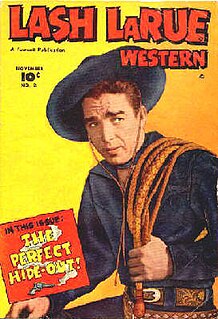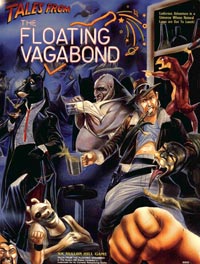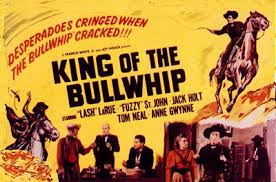
Supersonic travel is a rate of travel of an object that exceeds the speed of sound (Mach 1). For objects traveling in dry air of a temperature of 20 °C (68 °F) at sea level, this speed is approximately 344 m/s, 1,125 ft/s, 768 mph, 667 knots, or 1,235 km/h. Speeds greater than five times the speed of sound (Mach 5) are often referred to as hypersonic. Flights during which only some parts of the air surrounding an object, such as the ends of rotor blades, reach supersonic speeds are called transonic. This occurs typically somewhere between Mach 0.8 and Mach 1.2.

Jay Wright Forrester was a pioneering American computer engineer and systems scientist. He was a professor at the MIT Sloan School of Management. Forrester is known as the founder of system dynamics, which deals with the simulation of interactions between objects in dynamic systems.

Alfred "Lash" LaRue was a popular western motion picture star of the 1940s and 1950s. He had exceptional skill with the bullwhip and taught Harrison Ford how to use a bullwhip for the Indiana Jones movies. LaRue was one of the first recipients of the Golden Boot Awards in 1983.
Anthony Charles De Longis is an American actor, stuntman, and fight choreographer.

Tales from the Floating Vagabond is a science-fiction role-playing game by Lee Garvin, published by Avalon Hill in 1991. It has the tagline "Ludicrous Adventure in a Universe Whose Natural Laws Are Out To Lunch".

Whipcracking is the act of producing a cracking sound through the use of a whip. Used during livestock driving and horse riding, it has also become an art. A rhythmic whipcracking belongs to the traditional culture among various Germanic peoples of Bavaria (Goaßlschnalzen), various Alpine areas (Aperschnalzen), Austria, and Hungary (Ostorozás). Today it is a performing art, a part of rodeo show in United States, a competitive sport in Australia and increasingly popular in the United Kingdom, where it crosses boundaries of sport, hobby and performance.
Whip Wilson was an American cowboy film star of the late 1940s and into the 1950s, known for his roles in B-westerns.

Phil Arnold was an American screen, stage, television, and vaudeville actor. He appeared in approximately 150 films and television shows between 1939 and 1968.

The Adventures of Bullwhip Griffin is a 1967 American Western comedy film directed by James Neilson. The film is based on the novel By the Great Horn Spoon! by Sid Fleischman, and stars Roddy McDowall, Suzanne Pleshette and Karl Malden. The songs were written by Richard M. Sherman and Robert B. Sherman.
The term Lehman Wave refers to an economy-wide fluctuation in production and economic activity, with a wavelength of between 12 and 18 months, driven by a sudden major disruption of the economic system. The Lehman Wave is a damped, wave-like fluctuation around equilibrium. The amplitude of the Lehman Wave is larger for a business that is further away from its end market than for a business that is closer to its end market, which difference is caused by cumulative de-stocking of the intermediate supply chain.
This term Lehman Wave has first been used by Dutch researchers in 2009 who gave that name to the economic wave that started in September 2008. They argue that the latter was caused by global de-stocking after the financial panic following the bankruptcy of Lehman Brothers on September 15, 2008. The Lehman Wave can have strong effects on the sales volume and therefore on the profitability of companies that are located upstream in the supply chain.
Active destocking in supply chain management is an active decision to reduce the inventory-to-sales ratio of a company. The inventory can include finished products, raw materials and goods in process. In general, active destocking is done following an autonomous, often financial decision by a company to improve its efficiency, free up cash and reduce its costs. Decisions for active destocking in general are made by financial executives or general managers.
Reactive destocking in supply chain management is a reduction of the inventory when expected demand goes down. When a company is only doing reactive destocking, the desired inventory to sales ratio, remains unchanged. Reactive destocking in general is done by operational managers of the logistical activities, without additional instructions. The inventory can include finished products, raw materials and/or goods in process.

"Don't Fight It" is a rock song performed by Kenny Loggins and Steve Perry, the lead-singer for Journey at that time. It is contained in Loggins' 1982 album High Adventure. Loggins described the song as 'an experiment in pushing my limits to include rock', from the liner notes of his 1997 compilation Yesterday, Today, Tomorrow.

Cow Country is a 1953 American Western film directed by Lesley Selander and written by Adele Buffington and Thomas W. Blackburn. The film stars Edmond O'Brien, Helen Westcott, Robert Lowery, Barton MacLane, Peggie Castle, Robert Barrat and James Millican. The film was released on April 26, 1953, by Allied Artists Pictures.
Barbara Woodell was an American film and television actress.
Cumulative quantities are a concept in logistics that involves adding up required materials quantities over a defined time-window that can be drawn as a 'cumulative curve'. This concept is applied in serial production and mainly used in the automotive industry to plan, control and monitor production and delivery.. The concept is sometimes called 'Cumulative Production Figures Principle' (CPGP).

King of the Bullwhip is a 1950 American film produced and directed by Ron Ormond starring Lash LaRue and Al "Fuzzy" St. John. It was the eighth of LaRue's films for Ormond's Western Adventures Productions Inc. The film was the second to be released by Howco, Ron Ormond's new film company composed of Ormond and drive-in movie owners Joy N. Houck and J. Francis White, and Ormond's first film as director. The screenplay is co-written by Jack Lewis and Associate Producer Ira S. Webb. Jack Holt and Tom Neal return from the previous film but in different roles. The film was shot at the Iverson Movie Ranch.













